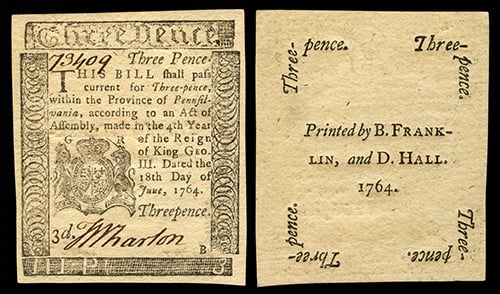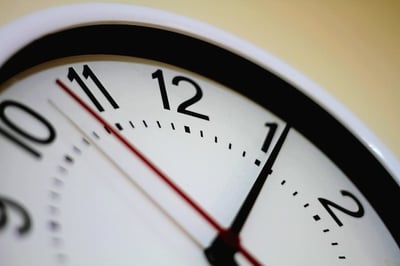
No matter how stellar your transcript, no matter how mastered your extracurricular activities, no matter how lyrical your essay—no application is complete without your SAT scores.
So how do you make sure your SAT scores are sent properly, at the right time, and with only the scores you are most proud of? Read on for our best advice on the decisions you’ll be faced with and what to do in case something goes wrong.
In this article, I’ll go over the process of sending SAT scores, the ins and outs of SAT Score Choice, when to send SAT scores (and when not to!), and what to do if your scores go missing. I’ll also explain the pros and cons of every option and give you my suggestion anytime there are multiple possible ways to proceed.
How to Send Your SAT Scores: 2 Methods
You can send your SAT scores either when you take the test or anytime after you get your scores. We’ll look at the two methods in more detail below.
Method 1: Use Your Four Free Score Reports
When you register for the SAT and for nine days after you take the test, you can send four free score reports to colleges and scholarship programs. However, note that you’d be doing this without first seeing your scores.
Here’s our advice on whether you should send these free four SAT score reports:
- Pros: These four score reports are free. A dollar saved is a dollar earned!
- Cons: You won’t know your scores before they get sent out. This means you won’t be able to use SAT Score Choice to pick which scores colleges see and which they don’t see (more about Score Choice in the next part of this article). Essentially, your scores will be sent out even if they aren’t as strong as you’d like them to be.
Recommendation: Save some money and time—use your four free score reports to send scores to colleges that want to see all your SAT scores.
Note: More and more schools are allowing students to self-report their SAT/ACT scores and only require official score reports if students are accepted. If you’re only applying to schools that fall into that category and wait until your acceptances to send an official score report, you’ll have to default to method 2, which we’ll be covering next.
 Ben Franklin and his three-pence paper money are proud of your frugality.
Ben Franklin and his three-pence paper money are proud of your frugality.
Method 2: Order Additional Score Reports
You can also order SAT score reports through your College Board account any time after you get your scores. In your account, you can see all of your SAT test dates and scores and choose which ones to send out.
Here’s our advice about whether you should send your SAT scores after you see them:
- Pros: You can see all your scores first, so you can select only your best scores to be sent out (again, I’ll address SAT Score Choice in more detail below).
Here are our recommendations for when to order additional SAT score reports:
- Send scores with your best section results to colleges that superscore the SAT. These schools make a new composite score using your best Math and Evidence-Based Reading and Writing (EBRW) scores from any SATs you took.
Can You Send Old SAT Scores?
If you’ve graduated high school more than a year ago and haven’t taken the SAT since then, or if you want to send scores from an SAT you took more than five years ago, you must request them from the archives. Each report costs $31, and each rush report costs an additional $31.
You can order old SAT scores in one of two ways (note that you cannot order them online through your College Board account):
- Call the College Board at (866) 756-7346. Be aware that there is an additional $15 fee for ordering scores over the phone.
Pro Tip: You might run across Q&A websites that tell you to simply mail or fax a copy of your printed SAT score report to colleges as a way of sending scores for free. Don’t listen to these! Most colleges only look at official score reports sent directly by the College Board. You can’t simply send schools a copy of your report, even if your deadline is approaching.
 Faxed a copy of your scores? Might as well have sent them this note.
Faxed a copy of your scores? Might as well have sent them this note.
Can You Choose Which SAT Scores to Send?
You can now decide whether you want the College Board to send all your SAT scores to colleges or whether you want to use a program called Score Choice.
SAT Score Choice lets you pick which scores you send to schools. You can select individual test dates, but not test sections. In other words, you pick the date of the SAT you want to send, and the College Board will send out scores from that test and that test only.
Say you took the SAT three times, and the second time you were nursing a fever and just generally having a bad day. Score Choice lets you send only the first and third test scores to colleges—so you can go ahead and consign that second one to the dustbin of history.
Here are the pros and cons of the SAT Score Choice policy:
Pros
- Score Choice is awesome for colleges that don’t require all of your SAT scores.
- It’s also perfect for colleges that superscore—you can send them the test dates that have your highest section scores.
- Finally, it’s the best way to send your best single SAT score to scholarship programs and the NCAA.
Cons
- You have to read your target colleges’ score submission policies very carefully. Failing to send all your scores to colleges that require all of them could land your application in hot water. To make keeping track of different policies easier, check out College Board’s BigFuture site, which lists the SAT score policies for hundreds of US schools.

When Should You Send Your SAT Scores?
Now, let’s discuss the best timing for sending SAT scores to colleges. In this section, we’ll touch on how early to send your scores, when to expect scores to reach your colleges, whether to consider rush ordering your score reports, and finally what to do if you miss a deadline.
Should You Send Your SAT Scores Early?
The College Board claims that sending scores early shows colleges that you’re a very interested applicant. If you first take the SAT your junior year, then, should you go ahead and send that score to colleges you’re particularly interested in?
It’s true that some colleges do sometimes ask to see proof that an applicant sincerely wants to go to their school; this is called demonstrated interest. But this is something that usually comes into play after you’ve turned in your full application, usually as a way to move someone up on a waitlist.
Typically, sending SAT scores early does not give you an edge. Similarly, it doesn’t count as demonstrated interest. This is because if you send SAT scores to a college but haven’t applied there yet, the admission staff will simply save them under your name in a general file until your application shows up.
And it’s not only that. If you send your scores early and are planning to retake the SAT, you won’t get the full benefit of Score Choice since you won’t be able to compare your early score with ones from later tests you take.
 Save getting there early for the Harry Potter swag line.
Save getting there early for the Harry Potter swag line.
When Should SAT Scores Get to the Admissions Office?
It will be no surprise to hear that official SAT score reports should get to your schools by their respective application deadline. In order to figure out what this means in terms of when to send your scores, let’s go through the timing of everything that happens after you take the test.
Step 1: The College Board Scores Your SAT
Step 2: Score Reports Are Posted Online and Processed for Sending
- If you registered for the four free score reports, these will be sent out to colleges about one to two weeks after your scores appear online.
- As soon as scores are online, you can order additional score reports from the College Board website.
Step 3: Colleges Receive Your SAT Scores
- Most colleges receive test scores electronically through software that files your score with the rest of your application materials. Colleges themselves select how often to download new SAT score reports; this is usually somewhere between once per day and once per week (for example, UVA gets SAT scores daily).
- Remember that there will be a lag between when a college gets your scores and when it adds them to your application file.
In most circumstances, the math for ordering SAT score reports goes like this:
less than 1 week for ordering scores + 1 week for colleges to get and file scores = order scores at least 2 weeks before the application deadline
I always hedge my bets, so I’d advise ordering test reports at least three weeks early for safety or, even better, as soon as you’re done testing and know which schools you’re applying to.
Your last possible test date math looks like this:
3 weeks for scoring + 3 weeks for ordering tests = take your last test no later than 6 weeks before the application deadline

Should You Rush Your SAT Score Report Order?
If you are worried about beating deadlines, you can pay extra for the College Board’s rush service. Here are the pros and cons of doing so:
Pros
- Instead of taking “a few days” to send your scores, the College Board guarantees SAT scores will be sent out within one to four business days.
Cons
- This service does not speed up how long it takes the College Board to score your test.
- It also does not speed up how long it takes for colleges to receive your scores. Remember, schools choose the timing themselves, with some getting score reports only weekly. In other words, while your scores are sent sooner, they aren’t necessarily going to be seen by schools sooner.
- Colleges that receive score reports electronically might not view priority reports at all.
- The service costs $31 (but you can rush reports to many schools at once).
Recommendation: If your deadline is fast approaching, it might make sense to pay extra to buy yourself a little more time. Just keep in mind that colleges might not see your scores any faster if their delivery preferences aren’t set up for priority reports.
 Yes, sir—we have our very fastest messenger on it, sir.
Yes, sir—we have our very fastest messenger on it, sir.
What If You Miss the Application Deadline?
What happens to applications when SAT scores arrive late varies depending on each college’s policy.
Some schools have a hard and fast rule: late application materials disqualify that applicant. For example, the University of Texas’s policy even overrides the guaranteed admission the school offers to any in-state students in the top 10% of their class.
In short, late test scores are a big gamble —you’re essentially betting that your application won’t be considered until further into the process and that therefore your SAT scores still have a chance to get there without issue.
For example, here’s what Stanford University’s admissions site warns in regard to test scores:
“We cannot delay the review of an application in anticipation of scores that will arrive after the deadline nor can we guarantee that late [SAT] scores will be reviewed.”
Meanwhile, UVA points out the following if your SAT scores are late:
“There is a chance that we will have already started the [sic] review your file before those scores arrive. You should still send those scores. … There’s a chance that the scores will be seen at some point in the process.”
Finally, some schools judge applications on a case-by-case basis. This means that an otherwise excellent application might be put aside until SAT scores arrive, while an application that is clearly not a good fit for the school will be rejected even before scores are received.
How Can I Ensure That My SAT Scores Don’t Get Lost?
A college is guaranteed to receive your SAT scores either when you select it during SAT registration or when you select it on the College Board website while ordering additional score reports.
Some university systems, such as the University of California system, which has many campuses under one umbrella, share scores among campuses. In other words, if you send your SAT scores to one UC campus, your scores will be distributed to all UC campuses.
The most likely reason your target college can’t find your SAT score report is that you picked the wrong school’s name on the form. If you registered for the four free reports, check your own score report to confirm that the colleges you put in are correct. If you ordered reports through the College Board website, log in to your account to double-check the colleges you selected.
A good rule of thumb is to wait three weeks after you send your SAT scores to check whether they’ve been received. Usually, this info is available on the college’s application site, but in some cases colleges will contact you to let you know which application materials aren’t in your file yet.
If you get a notice from the college that your scores are missing, don’t panic: often, it can take up to a few weeks for received application materials to be logged. Chances are, the school has indeed received your scores but simply hasn’t filed them yet. Feel free to call the admissions office and calmly and respectfully ask them to check whether your SAT scores have arrived or not.
If your SAT scores don’t turn up—either because they got lost in the mail, were somehow electronically derailed, or were simply misfiled— you can always resend your scores by ordering new ones through the College Board website.
 Can we somehow get the tooth fairy involved with this whole missing-SAT-scores situation?
Can we somehow get the tooth fairy involved with this whole missing-SAT-scores situation?
What’s Next?
Unsure how to study for your next crack at the SAT? Check out our expert advice and SAT study plan suggestions for taking the test your sophomore and junior year as well as the summer before senior year.
Ready to try for a full SAT score? Learn what it takes to get to a 1600 from a perfect SAT scorer.
Want to start working on the rest of your college application? Try out our tips on how to craft a versatile one that’ll work for many different colleges.
Ready to go beyond just reading about the SAT? Then you’ll love the free five-day trial for our SAT Complete Prep program . Designed and written by PrepScholar SAT experts , our SAT program customizes to your skill level in over 40 subskills so that you can focus your studying on what will get you the biggest score gains.
Click on the button below to try it out!

Source: blog.prepscholar.com